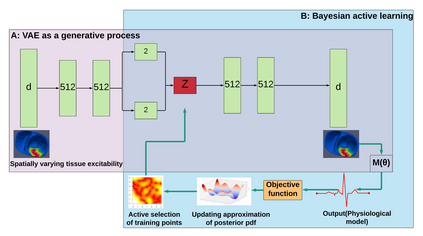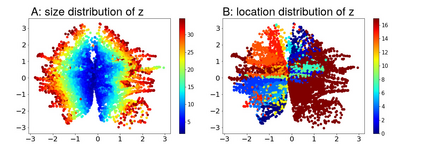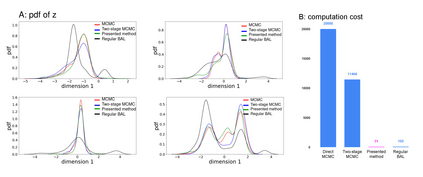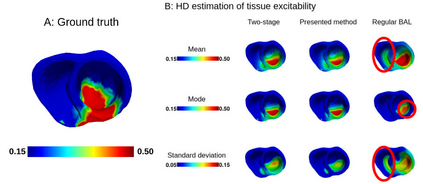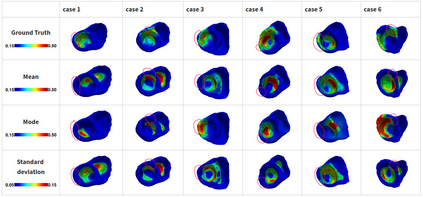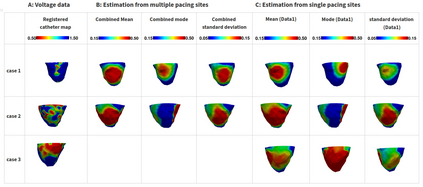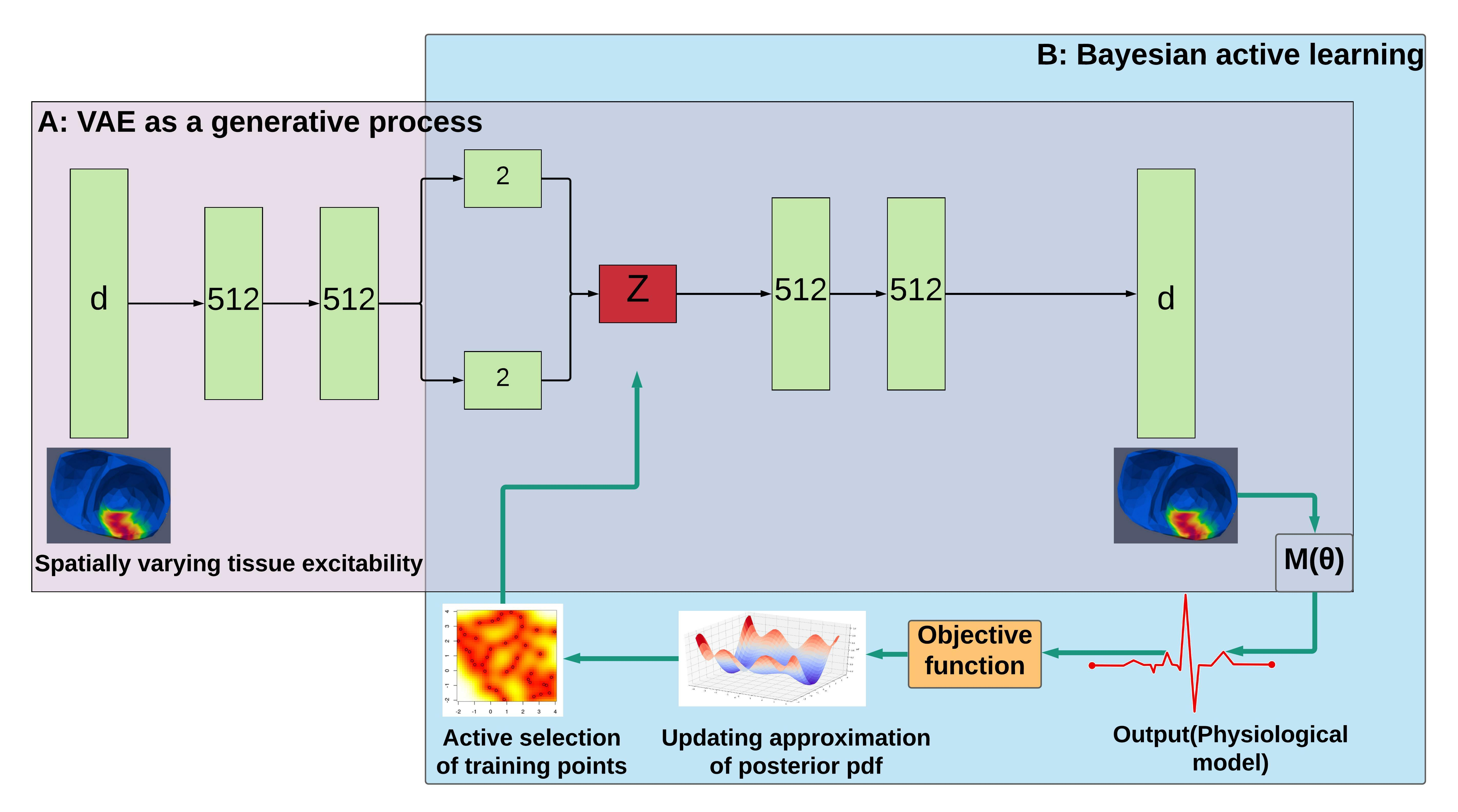Probabilistic estimation of cardiac electrophysiological model parameters serves an important step towards model personalization and uncertain quantification. The expensive computation associated with these model simulations, however, makes direct Markov Chain Monte Carlo (MCMC) sampling of the posterior probability density function (pdf) of model parameters computationally intensive. Approximated posterior pdfs resulting from replacing the simulation model with a computationally efficient surrogate, on the other hand, have seen limited accuracy. In this paper, we present a Bayesian active learning method to directly approximate the posterior pdf function of cardiac model parameters, in which we intelligently select training points to query the simulation model in order to learn the posterior pdf using a small number of samples. We integrate a generative model into Bayesian active learning to allow approximating posterior pdf of high-dimensional model parameters at the resolution of the cardiac mesh. We further introduce new acquisition functions to focus the selection of training points on better approximating the shape rather than the modes of the posterior pdf of interest. We evaluated the presented method in estimating tissue excitability in a 3D cardiac electrophysiological model in a range of synthetic and real-data experiments. We demonstrated its improved accuracy in approximating the posterior pdf compared to Bayesian active learning using regular acquisition functions, and substantially reduced computational cost in comparison to existing standard or accelerated MCMC sampling.
翻译:对心脏电电生理模型参数的概率估计是走向模型个性化和不确定量化的一个重要步骤。然而,与这些模型模拟有关的昂贵计算使Markov 链子Monte Carlo(MCMC)直接取样模型参数的后部概率密度功能(pdf),计算得非常密集。另一方面,以计算高效的代用器取代模拟模型而形成的近似后部质素pdf,其准确性有限。在本文件中,我们提出了一个巴伊西亚积极的学习方法,以直接接近心脏模型参数的加速后部(Photoior pdf)功能。我们明智地选择了培训点,以查询模拟模型的模拟模型,以便利用少量样本学习后部的样本,学习后部的后部(Poposior Mexior pdf ) 。我们将一个基因化模型纳入巴伊西亚积极学习中,以便在心电图3中,用一个模拟模型(我们所展示的)测测测测测算的常规性组织精确性模型,在模拟性机能3中,我们用一个已演示的测测测测测测测测算系统测测测测算系统测测测测测算系统成本3的模型。

